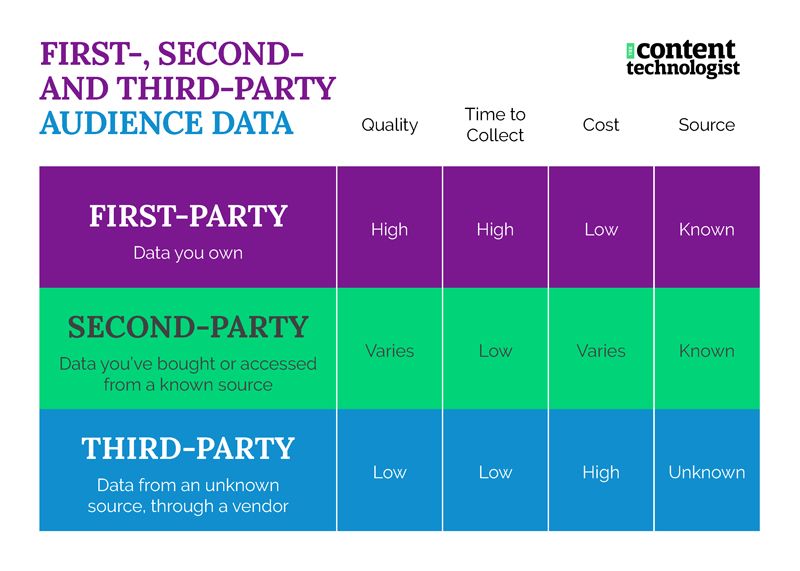For content publishers, finding reliable information about web analytics can be challenging. Most web analytics systems are built with ecommerce as the core focus, advertising viability as an add-on, and editorial decision-making as an afterthought. Experts on digital editorial metrics are few and far between. Most legacy media companies never invested in thinking beyond the error-ridden easily inflated impression-based advertising system, and digital editors are far too weighed down with producing too much content to make space in their brains to learn much beyond the basics.
I've spent the past seven years jury-rigging ecommerce-focused systems to focus on content, making sense of content analytics from a toolbox assembled for another use case. In this new monthly series, I want to share what I've learned and patterns I see, with the hope that content marketers and website publishers can make some use of them. Many of these metrics are often misread and used to make bad business decisions—by execs who never bothered learn nuance, by marketing leaders who understand growth but not churn, by entitled broadcasters who believe audiences will hang on every word and avoid hard truths about how people actually consumer info.
In a business world obsessed with gamification, competition and ranking, people lose their jobs when leaders misread metrics. Because they're rarely provided time and training to understand editorial analytics, content folks dismiss data-backed thinking as universally challenging and out of reach. But if you know what to look for, understanding common data stories and patterns in your analytics can improve content performance immensely.
Today we'll spend time with some of the most oft misread metrics: duration. How much precious time from their days do your readers devote to your content? How can you take actionable steps using duration data?
What are duration and time engaged metrics and why do they matter to editors?
Duration measures how much time, on average, your audience is willing to spend with your content and your brand. As discussed on a recent episode of Reply All, video algorithms like TikTok and YouTube can determine which content to serve next based on the content you spend the most time with. It's a decent system for passive measurement, since video content is always loading and always tracking as it loads. As long as the video content keeps loading, the algorithm believes you're engaged and serves you similar content.
Engagement with text-based web content is notoriously much harder to determine. Text loads quickly, and people consume the content at different paces, for different needs. Informational websites don't have "like" buttons, and operating a comments section is only for the bravest of web operators. Email newsletters are even less measurable—that privacy is critical to newsletters' current popularity—and so newsletter writers will never be able to tell whether someone devours every word of your newsletter or just skims the headlines.
On websites, the length of time an audience spends with content is crucial to understanding whether they like it or not, whether they want to see more, whether they'll return, and whether they'll subscribe.
Common website duration metrics:
- Time on page (universal GA): How long a user spends on a particular page before clicking to the next page, whether or not they're engaged with the page
- Session duration/time on site (universal GA): How long a user spends on a website, whether or not they're active on the page, whether it's in the foreground or background, last page excluded.
- Engagement time (GA4): How long a user spends on a page in the foreground.
- Engagement time per session (GA4): How long a user was engaged on a specific screen or page during the course of a session.
Best practices for using duration metrics
For retail sites, the rule of thumb is to keep session duration low. A long session duration during a purchase can mean users are confused or frustrated by the site. Ideally, ecommerce sites get users to what they need, fast, without many hiccups.
For content-rich sites, session duration is a different story. You want a longer session duration because you're in the attention-attracting business, or because you want users to be researching your product/brand so much that they want to read every word you've written.
When evaluating duration, remember that these metrics are averages, which means they log the time of super-interested readers at the same rate of the ones who are just skimming the headlines. Someone who has a bunch of tabs open clicking back and forth is right there, hanging with the bots.
Averages should always be used in conjunction with another metric or in comparison to another, similar situation. On their own, they have little value or meaning and should absolutely not be used to make business decisions without additional context.
I recommend that content-driven websites:
- Benchmark durations quarterly and note major changes or anomalies.
- Know duration benchmarks for different types of pages on your website: how do they differ with recipes, articles, investigative pieces, shorter pieces.
- Understand duration metrics for assorted content topics.
- Have an idea of which sources yield more ideal duration metrics.
- Be satisfied with shorter durations than you'd feel it would take to read the content on your site. Not every pageview is a reader, and not all readers want to spend all day with your content. That's cool. Your readers have lives too.
Common duration metric data stories
- A piece of content isn't getting many views, but users seem to spend more time with it than other pieces of content. It might be worth looking into ways to promote that content's visibility on your website.
- You've significantly changed the format of articles or content on your website and you want to compare how much time users are spending the new format to older formats.
- One piece of content has a significantly longer time on page/engaged time than all the others. Look into that page: is it amazingly thorough? Or is there something wrong with it that is confusing users or breaking? Maybe there's just a seven-minute video on the page. Regardless, an extra-long anomaly is worth looking into.
- An extended time on page for solid, in-depth content can make the case for an article's value, even if that page has a high bounce rate or low conversion rate.
- Certain page formats have very low time on page, even when session duration is high. Many websites use navigational category pages that dynamically populate metadata for all the pages with a specific tag, and usually time on those pages is extremely low. It's easy to generate pages this way, but a poor user experience and a waste of web space. I subscribe to a website philosophy that's similar to my green living philosophy: Make the most of what you use, and use only what you need. Those content-light navigational pages are massive opportunities to better connect with your readers.*
*The Content Technologist website has dynamically generated category pages, a part of the Ghost CMS, but one day I will commission custom code to override that and create better category pages.
Pitfalls of duration and time engaged metrics
- Duration metrics don't track every moment of a user's visit. Google Analytics can't track how long users are on the final page of your site before they exit; it just knows that they peaced out on that page. That's also why time on page can be greater than session duration—a phenomenon many blog posts have explained in great detail.
- Engaged time metrics, a feature of Google Analytics 4, are more useful than session duration and time on site, since they measure all interactions with the page, particularly scrolls. That doesn't make the others bad, it just means they're measuring different actions.**
- Duration metrics can be altered in Google Analytics accounts with additional event tracking, so they may differ from business to business.
- Like all website metrics, the only duration metrics you should really pay attention to are your own website's because you can ensure their consistency.
- Bad websites often have longer duration metrics... not because their content is good but because pages take forever to load, have too many ads with excessive cumulative layout shift, or because users don't know how to find what they're looking for. Always keep an eye on page experience when using duration as a benchmark.
** I do not recommend switching to GA4 just to get the engaged time metric. I need to write more about GA4, but I've been struggling to learn its quirks since it was released.
Duration metrics pair well with:
- Landing page/entrances: Session duration on a landing page is a great bellwether for which landing pages bring the most valuable customers to your site.
- Bounce rate/exit rate: Cut pages with high bounce rate, low time on page, but reevaluate high bounce rate, high time on page.
- New/returning users: Understanding how returning users value content has immense value
Now that you've spent all this time with duration metrics, head to your web analytics suite and get an idea of your time on page, session duration, and engaged time. Set a benchmark. When you make changes, check against your benchmark. Hopefully you'll find it worth the extra minutes for content planning.
Hand-picked related content







